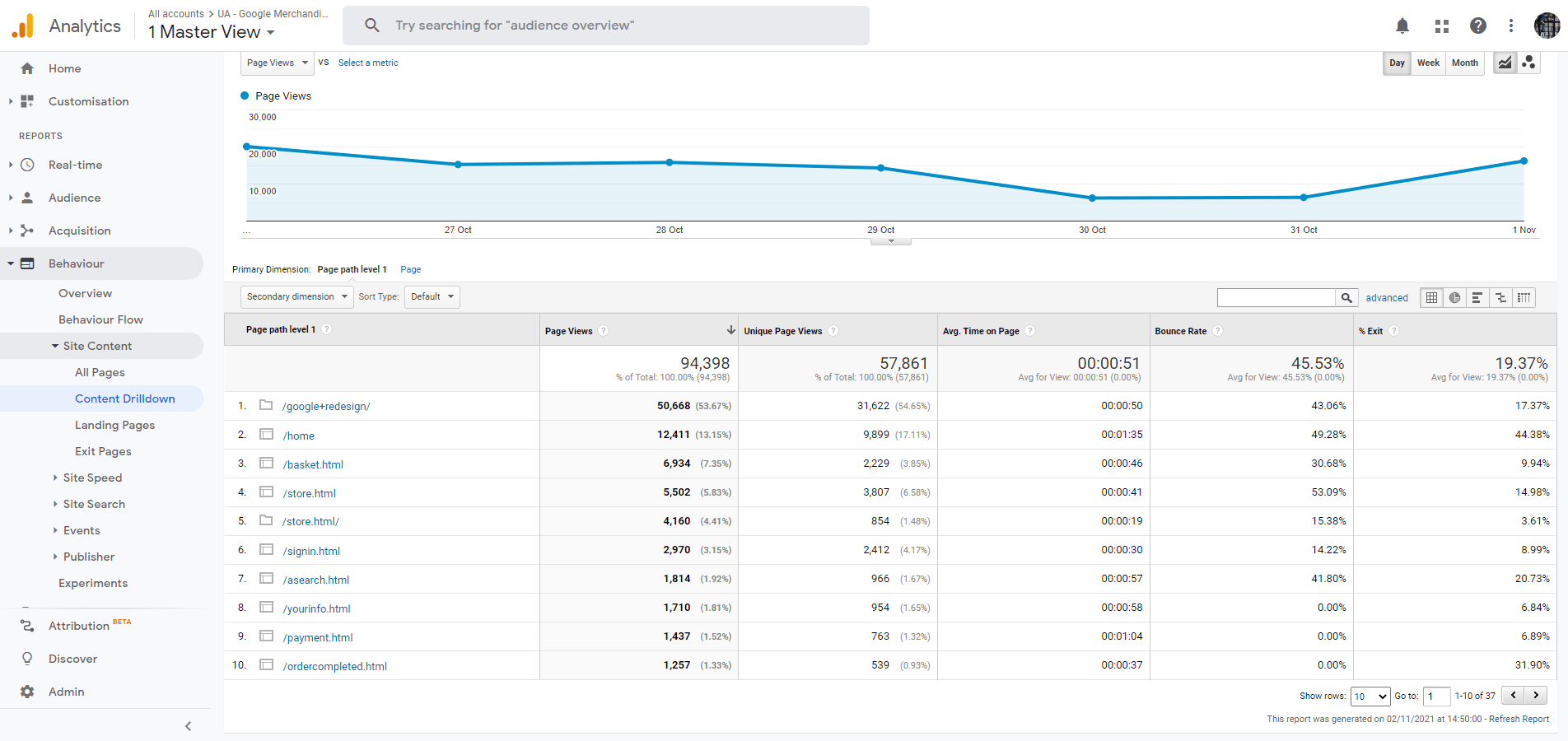
![]() Insights
Insights
The world of digital marketing moves at an immense pace. Reviewing, analyzing and tweaking your tactics is a great way to stay ahead of trends, remain relevant and boost your ROI. Marketing methods are often the first sighting potential clients will have of your business.
Approaching your B2B communication with a unique angle creates the opportunity to leave a memorable mark, boost your image and generate leads.
Knowing who you want to target is key in B2B marketing. Identifying your target audience generates demographic data which informs what direction and type of activity you need to create.
ABM is a highly targeted approach, focusing marketing efforts towards winning specific accounts. Many B2B companies opt for this method, aligning sales and marketing to define the ideal customer profile (ICP), and using that data to inform your marketing strategy. This allows you to identify desirable accounts, who to target at them and what the messaging is throughout the channels used, including types of content, ads and ad placement which all provide value to your prospects.
Using content pillars within your content strategy creates the opportunity to target different personas or account types. As a product of this personalization, you’re able to demonstrate how your business can alleviate problems the target accounts have, without being too broad. The specific nature of ABM leads to a shorter sales cycle. With highly personalized content and direct account focus, this approach benefits from a smoother customer journey, higher conversion rates and ultimately ROI.
Producing free and valuable content is a great way of generating leads. The informative nature of blogging enables the prospect to build trust and reliability through your content, enabling you to nurture them until a point whereby they are ready to convert, either now or in the future.
Despite the shift towards short, snappy content across social media, long form blogging still holds strong potential for conversion. Longer form blogs enable users to understand what it is they are buying, and who they are buying from in much greater depth than they would from a post on social media. Given the number of decision-makers involved in the sales process of B2B marketing, consistent, longer-form content ensures everyone involved can access the information needed to generate interest.
Ensuring tracking is implemented correctly from the start is essential to measuring your campaigns, so although you may think this is the last part of the puzzle, it really all starts with ensuring tracking is set up correctly to gather the data you will need. Measuring the engagement of your marketing brings both clarity and perspective to the campaign, whilst creating the opportunity to surface data and refine your methods.
Google’s Looker Studio is a useful tool for building dashboards and generating reports from your data. Multiple views can be created for different stakeholders, comparing performance and measuring KPIs whilst maintaining a clear overview of your campaign. Data from existing leads creates the opportunity to optimize your campaigns, testing and tweaking according to results, whilst keeping the multiple decision-makers in mind.
Testing is a great way to gain this insight, reviewing content and paid media to determine what ad copy, display, CTA etc each audience responds better to, can then be prioritized in your campaign. This can be done through many platforms that allow you to deploy multivariate tests.
Maximizing GA’s potential for gathering user data is key to improving lead generation. Measuring how visitors interact with your content, what content they prefer and where they came from allows you to identify what is working and what can be improved.
The content drilldown report in GA displays the most visited pages, bounce rates and time spent on each page. This can be tailored to focus on specific categories or pages with product information, for example:

Tracking behaviors in GA allows you to use data to inform your strategy, evolving the performance of your site with a customizable attribution model.
GA’s demographic analysis is key to ensuring your content is meeting the needs of your audience. After visitors respond to a CTA, download a whitepaper, or submit a request, this data feeds into B2B GA metrics which begins to determine potential prospects. This data can then be used to inform your strategy and target new markets. GA is packed with innovative features to help form a data-driven strategy.
Build a narrative with your content. Tying together the different areas of your business makes it easy for businesses to understand your offering and become interested. Seamless interactions over several touchpoints are now expected from users. Pushing your content theme throughout all promotional and digital marketing channels allows for channels to complement each other and work collaboratively.
Aligning content within PPC, paid social, social media and display allows the channels to touch prospects multiple times, building a consistent theme and optimising reach for each decision-maker involved in your B2B campaign. Supporting your content with client testimonials and webinars is a great way to add authority to your strategy. After demonstrating your brand’s potential through the different channels, educative webinars and social proof from clients certifies your proposals, binding the strategy together.
Multi-channel marketing allows you to sculpt a content strategy that focuses on informative content answering your audience’s questions, whilst illustrating the USPs of your business. With many decision-makers involved, the easier your marketing is to navigate and digest, the more likely it is to generate leads and sales. Of course, multi-channel marketing is useless without knowing what is and isn’t working to enable you to optimize your time and resource more efficiently.
Connecting the marketing efforts that drove a prospect to you with an offline sales process, is vital for continual improvement of your digital campaigns.
GA 360’s integration with Salesforce allows you to link online and offline data, providing more audience attributes and enabling you to separate leads with low and high-win percentages. Leads are pushed into both systems, creating a direct link from the record in Salesforce to the record in GA 360.
As the lead develops and win percentages rise, all progression is logged in Google Analytics, feeding into your analytics dashboards for you to optimize for business value, instead of solely lead volume.
This creates the opportunity to focus in on those keywords, campaigns and landing pages that deliver the highest business value. On top of that, GA 360’s audience targeting allows you begin marketing to people that look like potential customers. Having the ability to view offline sales data creates space for better informed and intelligent decisions, leaving you one step ahead of the competition.
Lead generation is ever-changing and often arrives from online and offline sources, meaning attribution across all channels is essential. Identifying winning conversions over generic enquiries provides a better understanding of the true value of your campaigns.
On top of online marketing sources, phone calls can be an important tool for B2B leads and need to be tracked accordingly. There are multiple tools available to do this, from Google Ad’s phone tracking solutions to third-party tools like ResponseTap.
Pushing offline sales data from a CRM system into GA will provide granular feedback linking offline sales numbers to campaign clicks, whilst making it possible to link other sales data, such as revenues, to specific campaigns and keywords.
Showcase your brand’s potential whilst bringing educational and informative content to your marketing. Case studies, testimonials and whitepapers provide the opportunity to both evidence and bring your product or service to life, whilst offering valuable insight into the industry.
Pushing informative and research-friendly content allows you to stay ahead of the competition and target users at multiple stages of the sales funnel. In-depth content enables you to provide research support and position your brand as an authority.
Bring your product or service to life. Case studies provide the help and insight buyers are looking for in the interest stage, whilst demonstrating the potential of your brand. Statistics and endorsements inside case studies provide the word-of-mouth validation that buyers are looking for before conversion. The narrative structure of case studies guide users through the customer journey, boosting relatability of your offering and allowing audiences to envision how they will benefit.
On top of positioning your company as an industry leader, whitepapers are highly shareable assets. Your content is likely to reach highly-specific readers, increasing the stakeholder buy-in that many B2B businesses need when signing off on purchasing decisions. Whitepapers are a proficient compliment to ABM campaigns, placing content in front of key decision-makers in your targeted accounts.
Creating a community-driven aesthetic through real people connects your employees, clients and prospects to form your own community and evokes positive and memorable associations with your brand. Social media and blog content is a great way to push your company values. Whether it’s carbon neutral goals or employee benefits, expressing the ethos through thought leadership will promote return customers.
Taking steps to get to know your audience and their behaviors nurtures a data-driven and customer-led strategy. Delivering consistent content across all channels, connecting all lead sources and adopting efficient tracking allows you to get closer to your audience and ultimately boost your marketing ROI.
Need help future proofing your B2B business?Learn how you can by downloading our whitepaper

![]() Insights
Insights

![]() Insights
Insights

![]() Insights
Insights